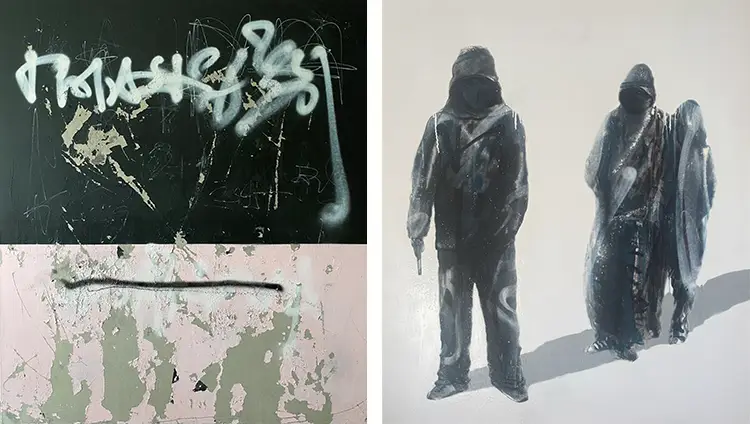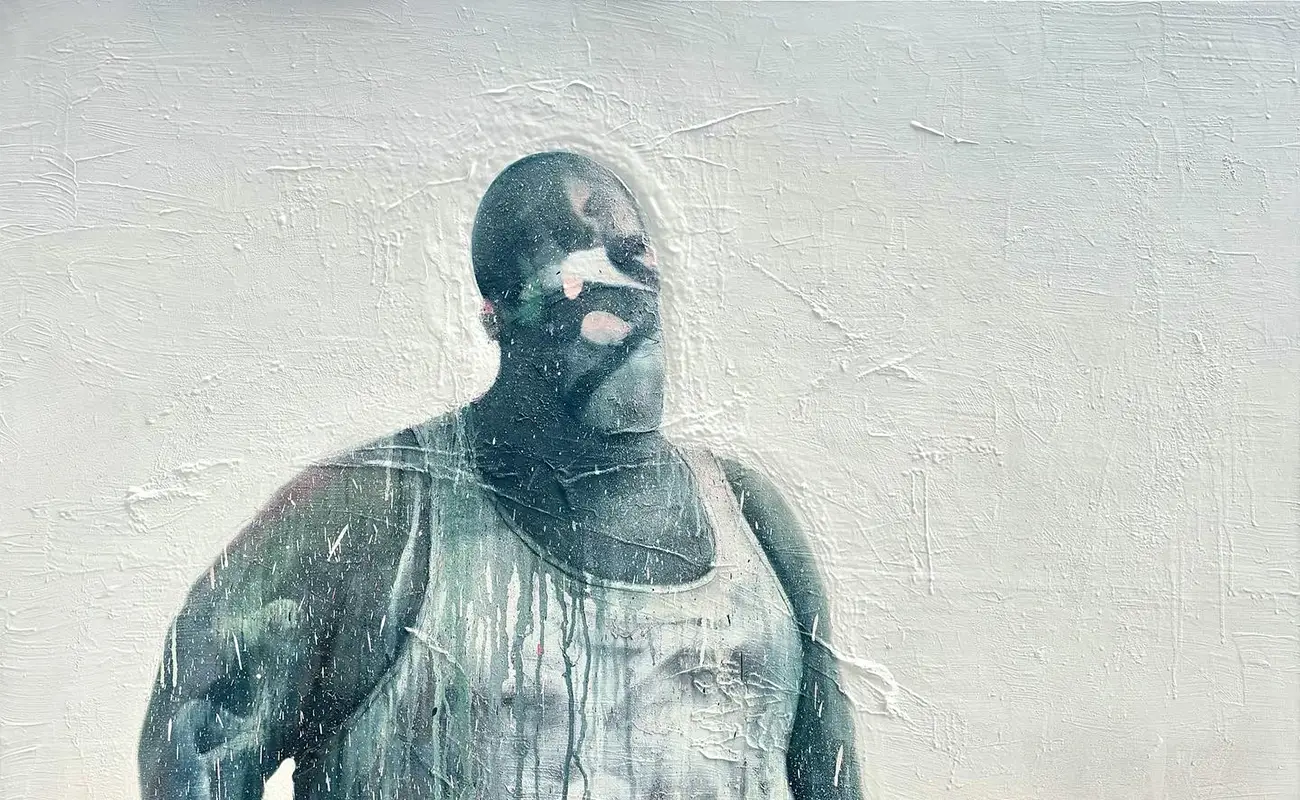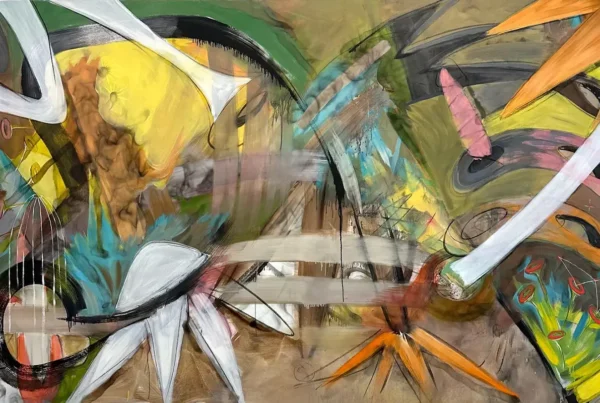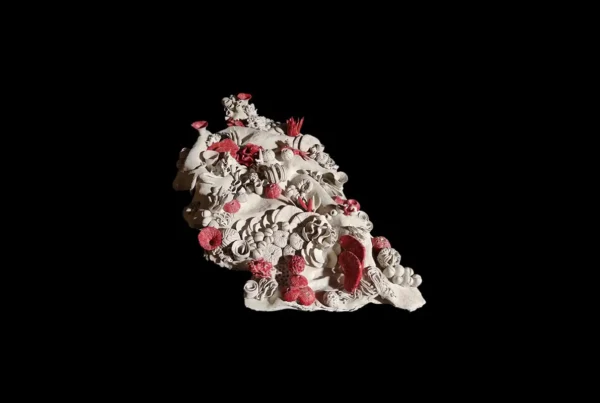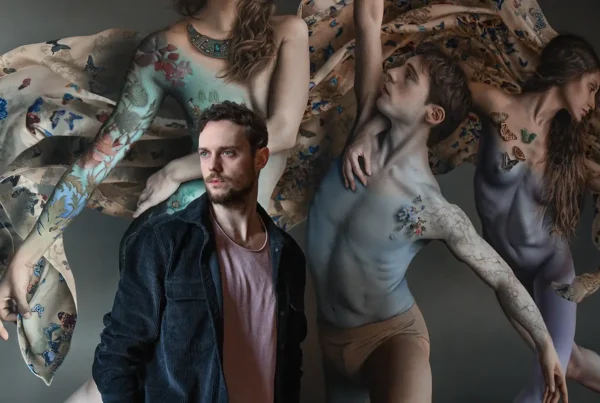“Art is a form of activism.”
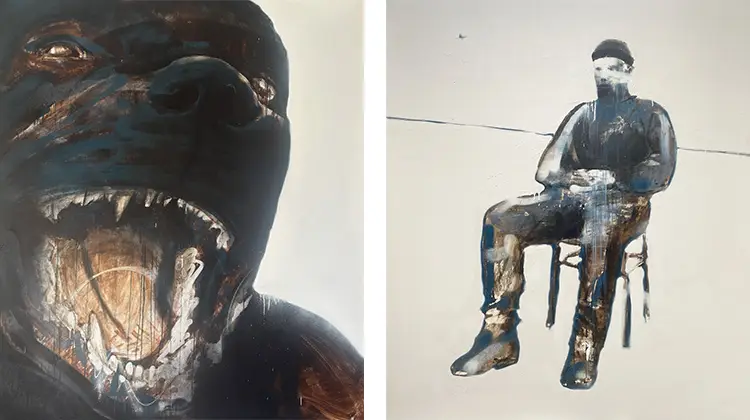
A Path Reimagined Through the Canvas
Shifting from the world of corporate design to the intensity of personal expression, Misha Waks redefined his creative journey in 2019. After 15 years of navigating the fast-paced, often impersonal environment of commercial design, he chose to redirect his focus toward art that highlights social urgency and personal authenticity. The transition wasn’t simply a career move; it marked a deeper transformation in how he chose to engage with the world. By stepping away from structured briefs and client-driven concepts, Waks embraced the freedom to explore themes close to his heart—issues that demand attention, reflection, and conversation. His artistic practice emerged as a counterbalance to the superficiality of his past professional life, offering a new way to connect with both audiences and ideas.
Waks’s foundation in design still plays a crucial role in his art-making process. The discipline and versatility he developed while working across diverse visual projects gave him a broad technical vocabulary and the ability to adapt across mediums. His previous career not only sharpened his visual instincts but also equipped him with the organizational clarity to independently oversee exhibitions and manage ambitious, multifaceted works. These skills have enabled him to structure his artistic life with precision while allowing creative spontaneity to flourish within that framework. The shift into art wasn’t a rejection of design but rather an evolution, channeling his earlier experience into something more reflective and socially conscious.
This decision to pivot also stemmed from a longstanding internal drive. Waks had always viewed himself as an artist at heart, even while immersed in the corporate world. His earliest memories are steeped in acts of creation—building models, drawing obsessively, exploring materials—and they planted the seeds of a deeper calling. The allure of art was never absent; it simply waited for the right moment to assert itself. By 2020, just a year after his official transition, Waks had already exhibited his work in 21 solo and group shows, spanning countries like the United States, Germany, the UK, and Poland. This rapid momentum is a testament not just to his skill but to the clarity and conviction with which he has pursued this new path.
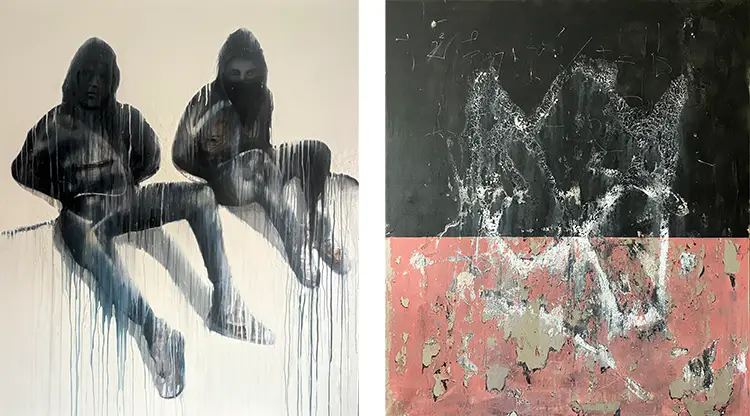
Misha Waks: Activism in Every Brushstroke
At the heart of Waks’s practice lies a sharp engagement with ecological degradation, gender inequality, and the marginalization of minority communities. Rather than creating for art’s sake, his work functions as a response to a rapidly shifting world—one saturated with media noise, environmental crisis, and sociopolitical tension. He is driven by the information overload that characterizes modern life, filtering these stimuli through a critical lens to produce work that comments, questions, and often unsettles. Waks frequently explores the anthropocene and post-nature narratives, placing human responsibility and interconnectedness under scrutiny. His pieces are not meant to soothe but to awaken, asking viewers to reckon with the consequences of collective inaction.
To articulate these complex themes, Waks employs an expansive range of materials and methods. His creative output includes painting, installation, sculpture, video, and performance—each chosen deliberately based on what the concept demands. This fluidity allows him to dismantle conventional genre boundaries and keeps his artistic language both dynamic and unpredictable. His studio in Warsaw serves as both sanctuary and laboratory, a space where ideas are given shape without compromise. Waks views his art as inherently political; he stands firmly by the belief that expression is inseparable from action. His guiding principle, “Art is a form of activism,” is not a slogan but a lived philosophy that permeates every project he undertakes.
Painting, however, remains Waks’s most intimate medium. Though self-taught, he approaches the canvas with reverence and emotional urgency. He describes each painting as a confrontation—an unfiltered dialogue between inner unrest and creative impulse. This honesty extends to his process, where destruction and rebuilding are often part of the journey. He is unafraid to scrap entire pieces if they fall short of his internal truth. In his view, painting captures what words cannot: emotional weight, vulnerability, and the raw architecture of thought. It’s a space where content and feeling collapse into one another, revealing not just a visual statement but a psychological exposure that challenges both artist and viewer.
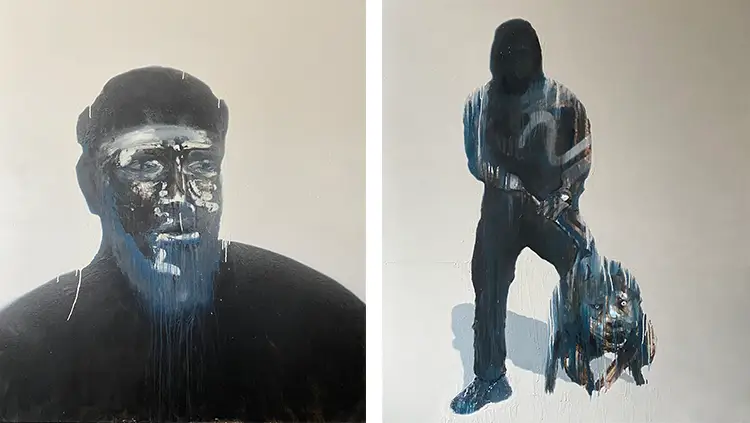
Stillness as Creative Oxygen
Waks thrives in a quiet studio, where solitude becomes both method and muse. Far removed from external distractions, he cultivates an environment of deep focus, often accompanied by music that acts as both soundtrack and structural guide. Sound is not a background feature but an active element in shaping mood, pacing, and atmosphere. On some days, he prefers total silence, allowing the subtle rhythms of thought and material interaction to rise to the surface. This choice is not about isolation but about intentional listening—to oneself, to the work, to the dialogue between idea and execution. The absence of noise becomes a space for clarity, where each decision carries deliberate weight.
Disorder and chaos have no place in his process. Waks gravitates toward stability and calm, recognizing that creative insight often emerges from sustained attention and repetition. His studio is not merely a site of production but a place of contemplation, where consistency is nurtured through ritual. Even something as ordinary as baking cookies becomes a source of grounding, a reminder that simplicity can anchor larger creative pursuits. He resists the glamour of spectacle and scale, favoring instead a rhythm that aligns with the demands of honest expression. This deliberate pace allows him to stay rooted in the present, creating work that resonates with sincerity rather than spectacle.
His commitment to this internal pace extends to his artistic ambitions—or rather, his conscious resistance to ambition in the traditional sense. Waks does not chase monumental installations or career-defining commissions. Instead, he seeks depth within his studio walls, finding satisfaction in the slow, steady evolution of his craft. For him, fulfillment is not measured by external milestones but by the integrity of each work and the quiet joy of creation. This grounded approach is not a retreat but a strategy—a way to stay attuned to what matters, to resist external pressure, and to cultivate a body of work that reflects truth rather than trend.
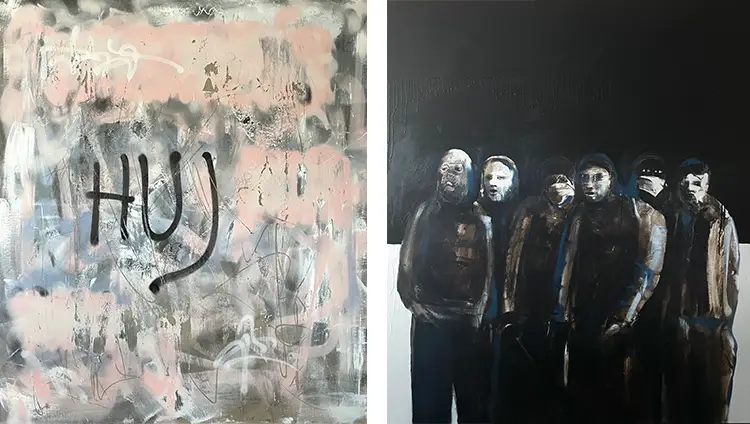
Misha Waks: Painting as Exposure
Despite his varied use of media, painting holds a distinct and enduring power for Waks. It is in this medium that his emotional stakes are highest and his vulnerabilities most visible. Each canvas becomes a mirror, reflecting not just external themes but internal contradictions, doubts, and desires. Painting challenges him, and he embraces that challenge without reservation. He views it as a test—not of technical skill but of emotional integrity. The act of painting demands full presence, a willingness to confront one’s own instability and truth. It is precisely this honesty that gives his work its edge, making each piece feel alive with tension and introspection.
Waks sees parallels between his own approach and that of Francis Bacon, one of his most significant artistic influences. Like Bacon, he is drawn to the psychological dimension of painting—the way it can distort, provoke, and expose. Bacon’s canvases, known for their emotional brutality and visual power, serve as a model for how art can reflect the fractured nature of human experience. Waks channels a similar energy, using abstraction, fragmentation, and expressive force to navigate the complexities of identity, conflict, and uncertainty. Painting, in his hands, becomes less about aesthetic resolution and more about excavation—digging into the rawness of lived experience.
His admiration for other artists extends beyond technique to philosophical alignment. Figures such as Józef Chełmoński, Olga Boznańska, and Olafur Eliasson have all left a mark on his thinking. From Boznańska’s haunting emotional palettes to Eliasson’s fusion of art and activism, Waks draws inspiration from those who refuse to separate artistic beauty from intellectual and moral inquiry. He integrates their influences not by imitation but through shared values—using art to ask questions, to challenge complacency, and to expose the layered intersections of emotion, ethics, and environment. In this way, Waks’s work remains in constant conversation, not only with viewers but with a lineage of artists who have sought to make meaning out of complexity.
